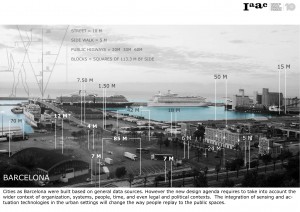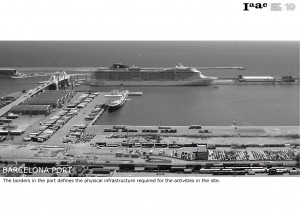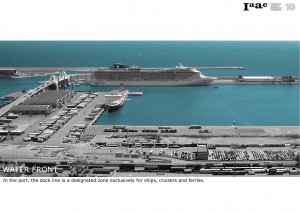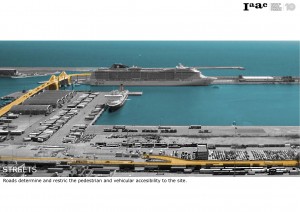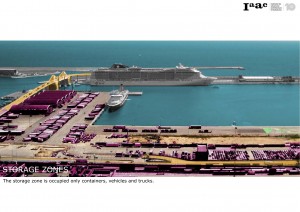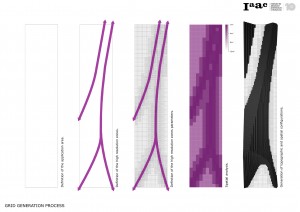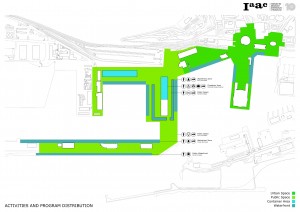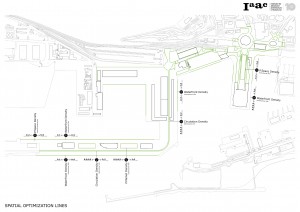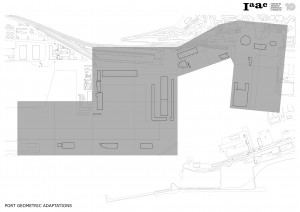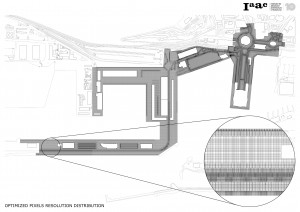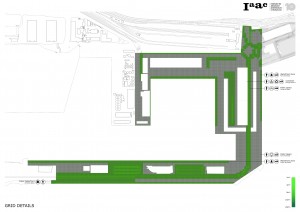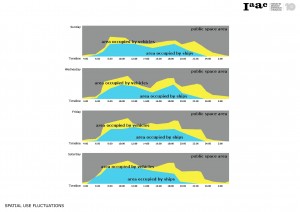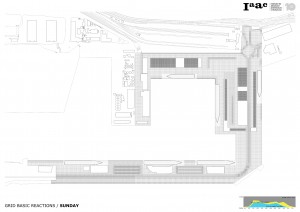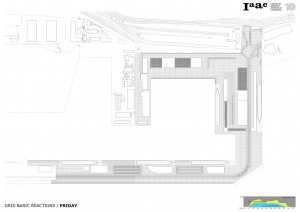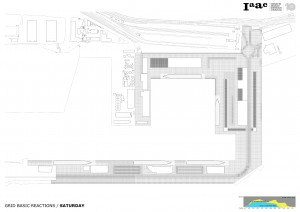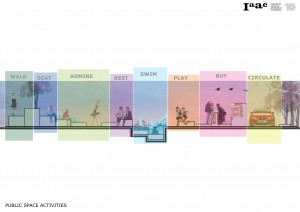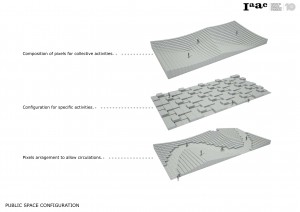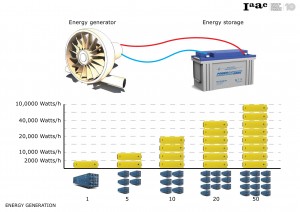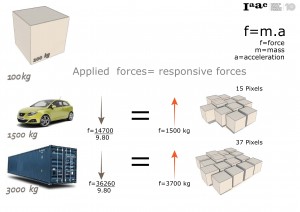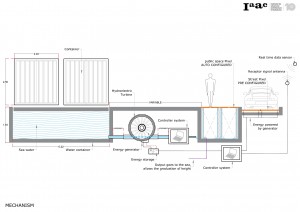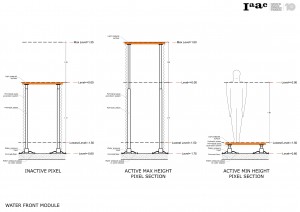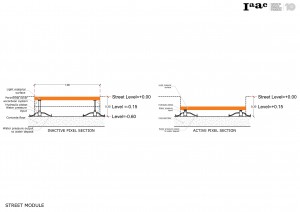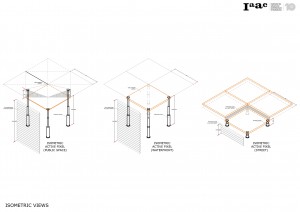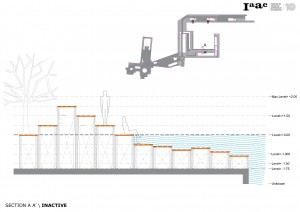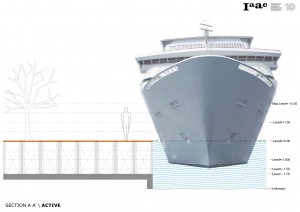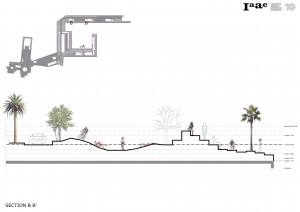A sound responsive system of triangular grids, on the surface of the underwater topography of the Barcelona Basin forms the crux of our design response.
This underwater matrix of hexagons, composed of smaller triangular units went through a process of experimentation and evolution resulting in the final prototype. The objective was to design and fabricate a working prototype of planar surfaces whose nodes when triggered by sound rise to and above the surface of the water and respond to the ongoing Port activities, ship movement as well as the design programme.


The first attempts concentrated on the detailing of the triangular components such that movement could be achieved manually. The next set of experiments were conducted with a single fabricated panel to understand buoyancy and negative buoyancy. This generated valuable insight in terms of material behaviour, sectional detail of each panel as well as the feasibility of the system itself.

We then fabricated a portion of the larger matrix, and controlled the vertical movement of each vertex of the triangles with a system of syringes and water. The final evolution was the synergy between 2 such triangular units, a cross-section of which consists of a perforated layer and a solid layer with a waterproof, stretchable membrane in between. The perforations allow for water to act as a natural weight during the vertical movement and the membrane ensures smooth movement and flexibility at the joints. The vertices of the triangle are composed of smaller triangles. A system of water filled syringes enabled in the fluid movement and independent control and movement of each of the vertices of the panels.






